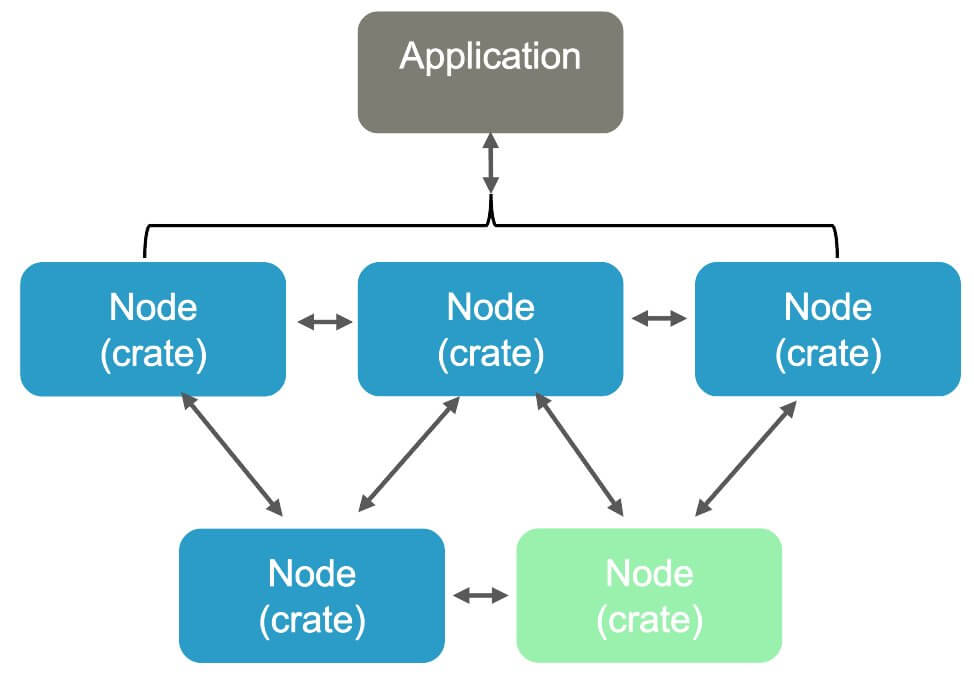Shared-Nothing Architecture
At the heart of CrateDB’s distributed power lies its shared-nothing architecture, a design where every node operates independently with its own compute, memory, and storage. This approach eliminates single points of failure, enables effortless horizontal scaling, and ensures consistent performance, even under massive workloads.

What “shared nothing” means
In a shared-nothing system, nodes don’t share disks or memory.
Instead, each node manages its own portion of the data and contributes equally to query execution and replication.
That independence makes CrateDB:
- Highly fault-tolerant: if one node fails, others continue to serve queries.
- Massively scalable: add nodes to increase both compute and storage capacity.
- Operationally simple: no central coordinator or external storage dependencies.
Every node can perform every operation (reads, writes, and query processing) ensuring that performance scales naturally with your data and user demand.

Benefits of shared-nothing design
| Advantage | Impact |
|---|---|
| No single point of failure | Continuous uptime and data availability |
| Linear scalability | Add nodes without reconfiguring the cluster |
| Workload isolation | Each node operates independently, preventing contention |
| Automatic rebalancing | Data redistributes evenly as nodes join or leave |
| Simplicity | Uniform configuration across all nodes |

How CrateDB leverages shared nothing
CrateDB builds on the shared-nothing foundation to deliver real-time analytics and search across massive datasets:
- Automatic replication: Data is copied across independent nodes for redundancy.
- Distributed execution: Queries run where the data lives, minimizing network traffic.
- Self-healing clusters: If a node fails or re-joins, CrateDB automatically rebalances data.
- Rolling upgrades: Updates and maintenance happen without service disruption.
Together, these features make CrateDB an always-on distributed database capable of handling real-time workloads at global scale.

Cluster state management of CrateDB
CrateDB’s cluster state management is the coordination layer that keeps every node in sync.
It ensures that all nodes share a consistent, up-to-date view of the cluster (its configuration, topology, and data distribution), so the system can operate reliably at scale.
Each node maintains a versioned copy of the current cluster state.
However, only one node (the master node) is authorized to make state changes at runtime.
At any point in time, there can be only one active master, elected by a quorum of master-eligible nodes.
Once a master is elected, the cluster becomes fully operational and ready to handle queries.
When the master node updates the cluster state, it publishes the new version to all other nodes and waits for acknowledgments before proceeding with the next update.
This approach guarantees strong consistency and prevents conflicting changes across the cluster.
The cluster state includes all metadata required for coordination and fault-tolerant operation, such as:
- Global cluster configuration and settings
- Discovered nodes and their health status
- Table schemas and mappings
- Locations and status of primary and replica shards

CrateDB architecture guide
This comprehensive guide covers all the key concepts you need to know about CrateDB's architecture. It will help you gain a deeper understanding of what makes it performant, scalable, flexible and easy to use. Armed with this knowledge, you will be better equipped to make informed decisions about when to leverage CrateDB for your data projects.
